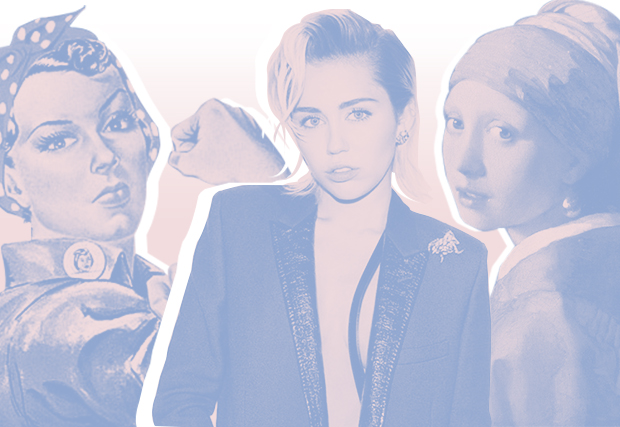“I can’t believe I’m still protesting this sh*t” is an apt way to summarize how women are still fighting for equal rights in the 21st century. From misogynistic leaders who are setting back women’s rights by decades to the small micro-transgressions we experience every day, feminist thought has a lot to cover and set straight.
It makes one wonder how we got here. When we look at how women are viewed throughout history, we will understand that the bias is real and, sadly, deeply ingrained. It will also teach us how we can defeat the misconceptions and stereotypes placed upon women. Here’s a small refresher to use when combating those #alternativefacts.
#1 It started with myth
For a quick summary of how myths often depict women, we look to Jungian theory. Across different civilizations, goddesses are depicted as all-powerful, the giver of life but also the only one who could take it away. It’s because of this power that everyone fears her and tries to suppress that power. Women, especially mothers, are the “enthralling force that Jung believed we must all escape in order to become fully human.”
#2 Affairs in the garden
Of course the story of Adam and Eve comes into play. In our consciousness, the idea that women are inferior to men due to how Eve was created after Adam. She is also scorned throughout ancient thought as the reason behind catastrophe. The Huffington Post relates, “…In 532 BCE, after the Babylonians fell to the Persians, Cyrus granted the Israelites the option to return. Those who chose to go back were haunted by the idea that, somehow, their ancestors had tweaked the divine nose and lost the protective shield.”
It continues, “With no place else to look but their sacred writings, when answers weren’t forthcoming with sufficient clarity, the role of the interpreter was born. None was a woman.” The interpreters then fixated on how Eve took the forbidden fruit and even offered it to Adam for reversing the faith of humanity. She and women in general would then be associated with the guilt and blame for the inexplicable tragedies that befell early religious civilizations.
#3 Paint me a picture
Despite being constantly blamed for just about everything, women are still expected to be perfect. Renaissance paintings always subjected women to the impossible standards we are still facing today.
Nancy Kranzberg of St. Louis Public Radio writes down her observations as she goes through a museum to prove the always-perfect depiction of women “Hans Holbein’s portrait of ‘Lady Guildeford,’ shows the lady not only in expensive clothing, but wearing beautiful golden jewelry and her husband insisted that she be holding a book indicating that she was refined and literate. Dutch artist Honhorst’s ‘Smiling Girl’ shows a sassy roughed young woman, probably a courtesan, holding a picture showing the backside of a young woman.”
#4 War stories
As the Allied Forces went deeper into war, the manpower and resources dwindled, forcing women to take jobs associated often to their male counterparts. We learned how the notion of gender roles was but a mere construct. Women could do what men could with equal proficiency. During World War II, women “became proficient cooks and housekeepers, managed the finances, learned to fix the car, worked in a defense plant, and wrote letters to their soldier husbands that were consistently upbeat.”
Many women also became soldiers themselves during this time. The illustrations we see today of muscled women in uniforms hark back to how women were also fighters. Sadly, they wouldn’t be compensated as efficiently as the men would be. The National WWII Museum reports, “At the war’s end, even though a majority of women surveyed reported wanted to keep their jobs, many were forced out by men returning home and by the downturn in demand for war materials. Women veterans encountered roadblocks when they tried to take advantage of benefit programs for veterans…”
#5 And now in pop culture
Sadly Doyle’s 2016 book Trainwreck is a documentation of the different ways women are punished when they try to move away from the patriarchal structure of society. The Atlantic writes that the book reflects the many modern ways women were condemned for simply trying to be themselves. “Doyle’s nominal focus is, as the book’s title suggests, the ‘trainwreck’: the woman who has a public meltdown or a similar (and similarly public) fall from grace.
It then continues to list down how various women are blamed for their own downfall, rather than being seen as victims of sick misogynistic standards. “Think Britney Spears. Or Whitney Houston. Or Miley Cyrus. Or Amy Winehouse, or Monica Lewinsky, or Princess Diana, or Judy Garland, or Billie Holiday, or Marilyn Monroe, or Sylvia Plath. Their falls vary, in their distance and their demeanor; what they share, though, is that they function as ‘photo negatives of acceptable femininity.’”
Art by Yayie Motos
Follow Preen on Facebook, Instagram, Twitter, Snapchat, and Viber
